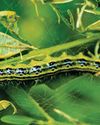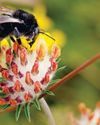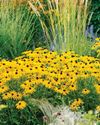
Range of colourful blooms
Witch hazels are a small group of deciduous shrubs native to North America, China and Japan, where they thrive in woods and on riverbanks. The ‘witch’ part of the name is believed to derive from the Old English word ‘wice’, which meant pliable and refers to the bendy nature of the branches. The Chinese witch hazel, Hamamelis mollis, was discovered in 1878 by the plant hunter Charles Maries on an expedition to China sponsored by James Veitch’s plant nursery. The qualities of the plant, however, weren’t immediately appreciated, and it was the hybridising of the Chinese and the Japanese witch hazels that produced more floriferous plants with a range of colourful blooms that made these popular garden shrubs.
This story is from the January 29, 2022 edition of Amateur Gardening.
Start your 7-day Magzter GOLD free trial to access thousands of curated premium stories, and 8,500+ magazines and newspapers.
Already a subscriber ? Sign In
This story is from the January 29, 2022 edition of Amateur Gardening.
Start your 7-day Magzter GOLD free trial to access thousands of curated premium stories, and 8,500+ magazines and newspapers.
Already a subscriber? Sign In

To dig or not to dig?
Should we be carrying out a full dig on plots now? Bob considers the pros and cons of the 'autumn dig' debate

The box ball blues
As if his beleaguered box hadn't already taken a beating, Toby now has to deal with some hungry box caterpillars

Save your own seeds
Masterclass on: seed saving

Strange sightings
Three unusual insects turn up in Val's garden in one day

A bolt from the blue!
Cornflowers are perfect for garden and vase

Winter moth prevention
Ruth shows you how to avoid maggoty tree fruits

Create a winter container
There are as many options as in summer

Lightweight gardening tools
AS well as being good for our mental health, gardening is also great exercise.

Autumn price round-up
AG finds better bargains in lesser-known brands

Rudbeckias
Rudbeckias are ideal for sunny summer patios and borders, with some able to survive our coldest winters